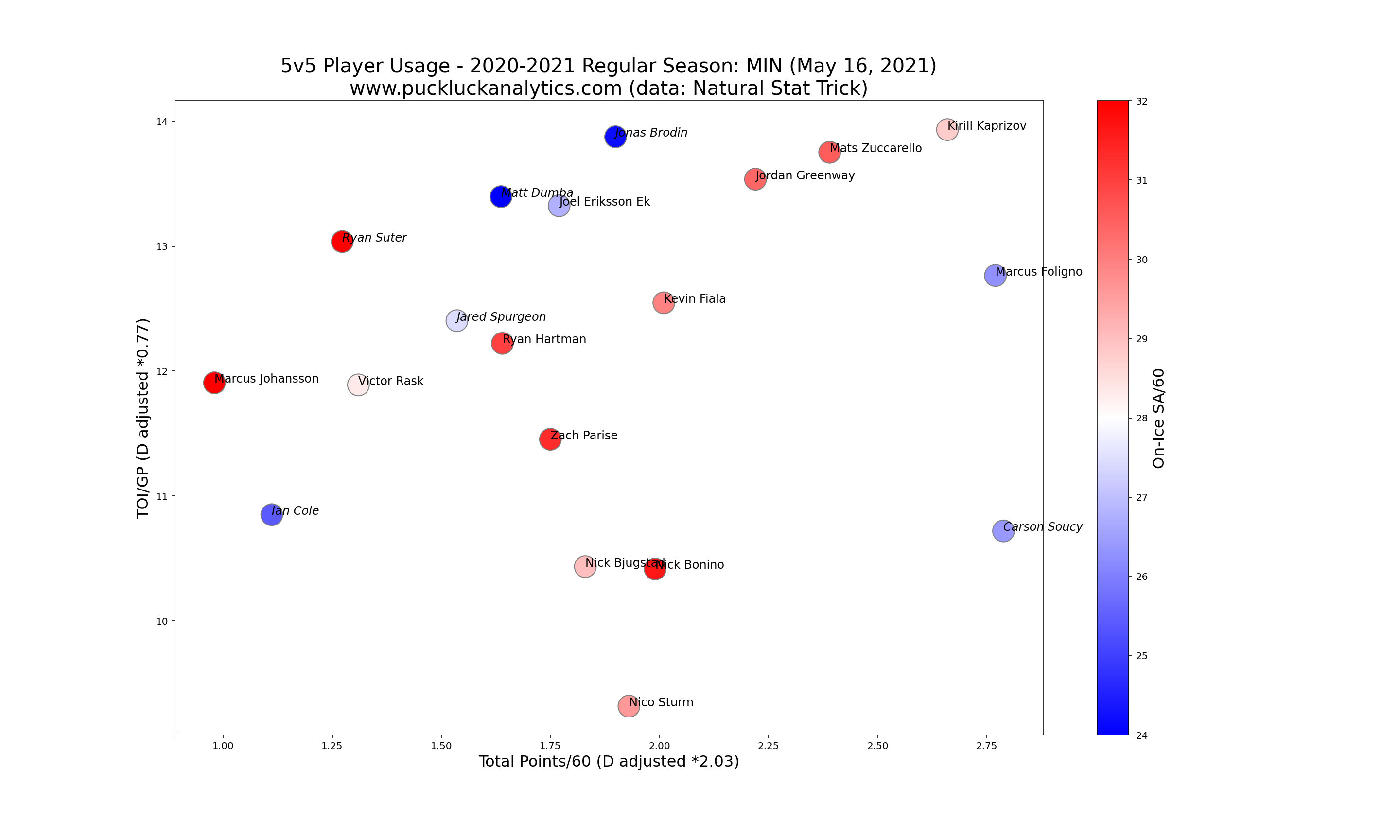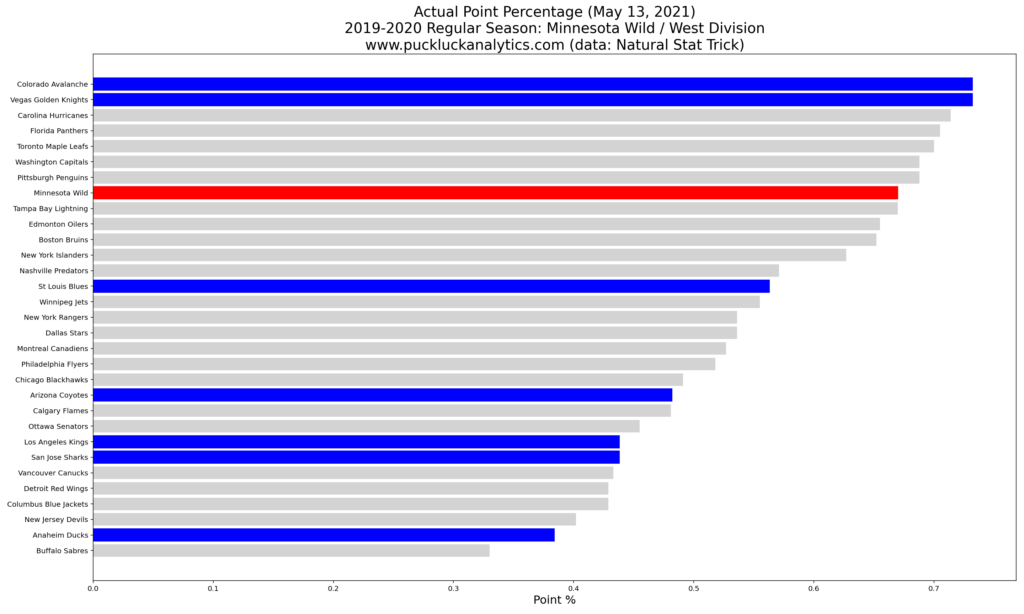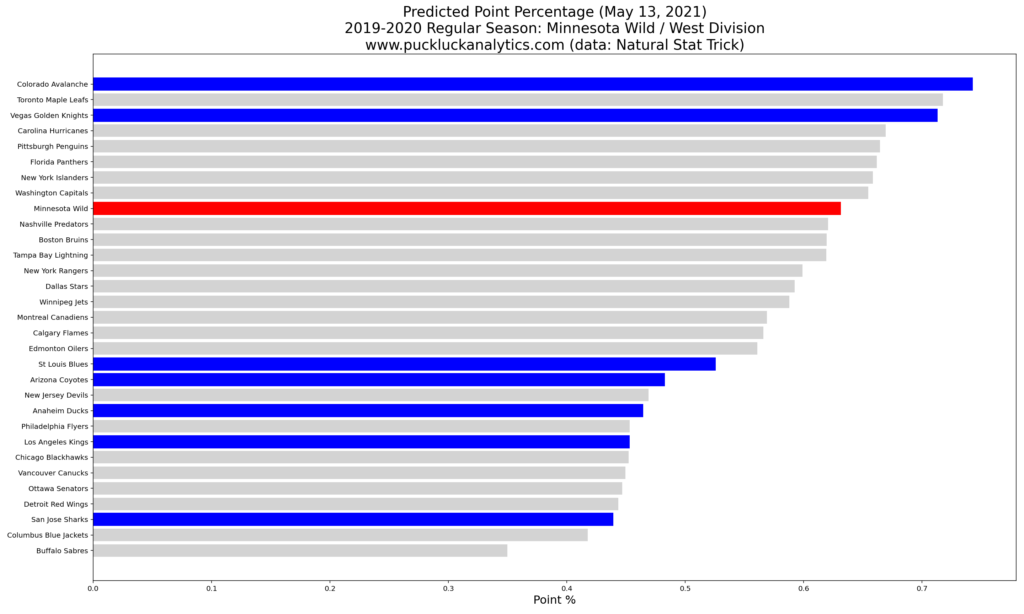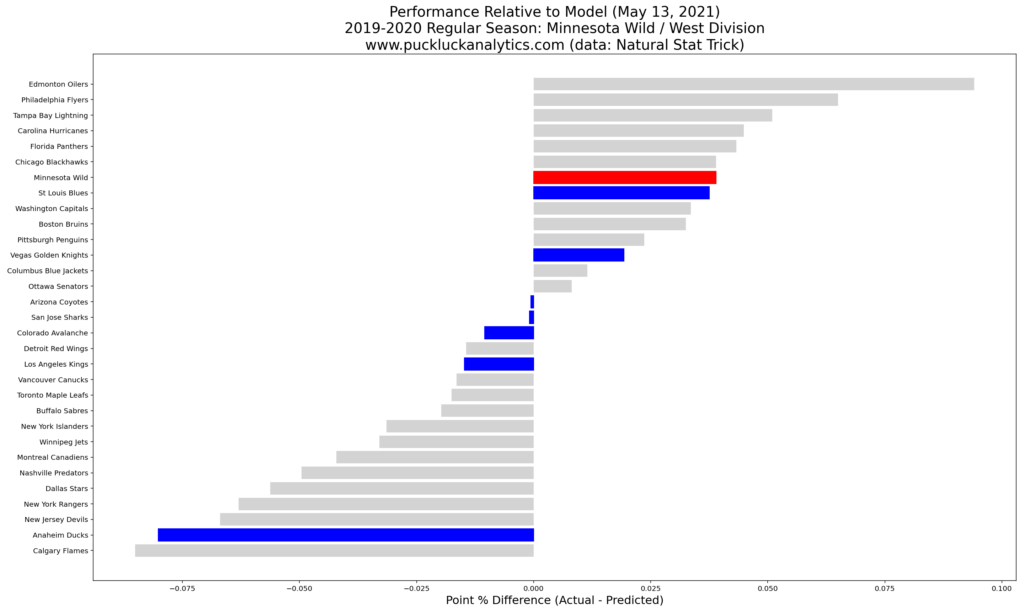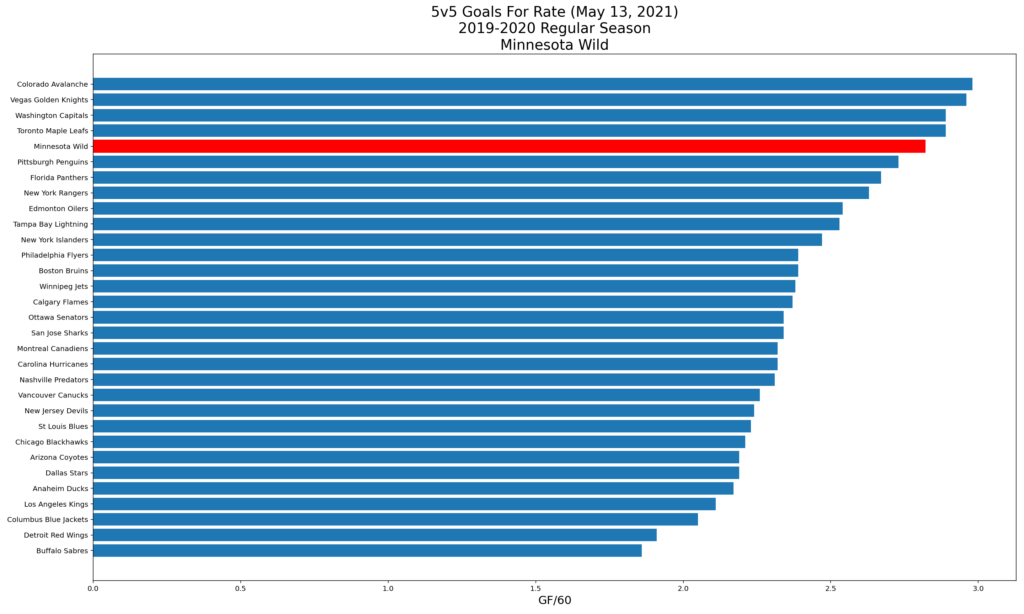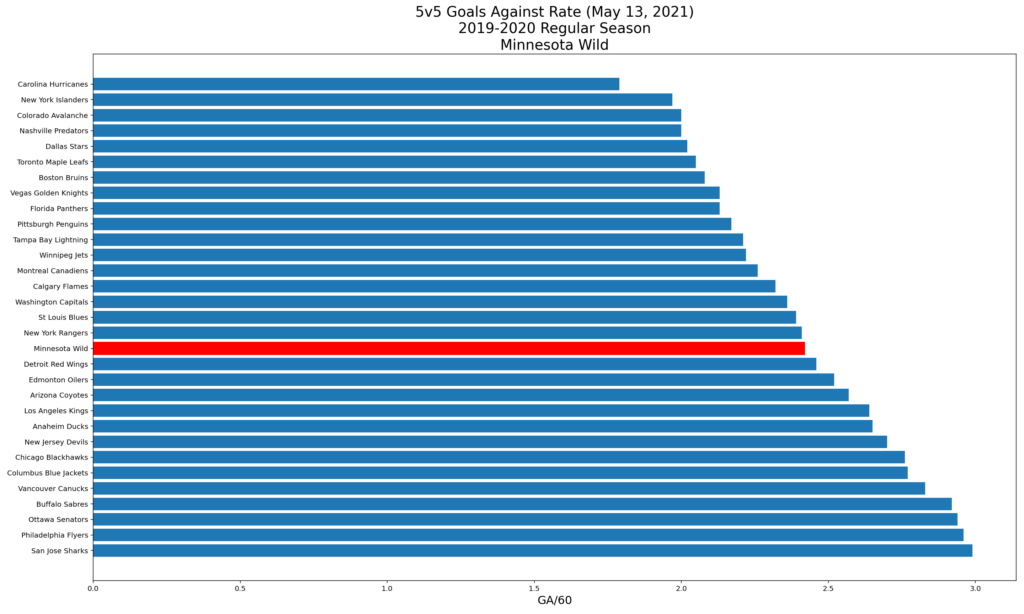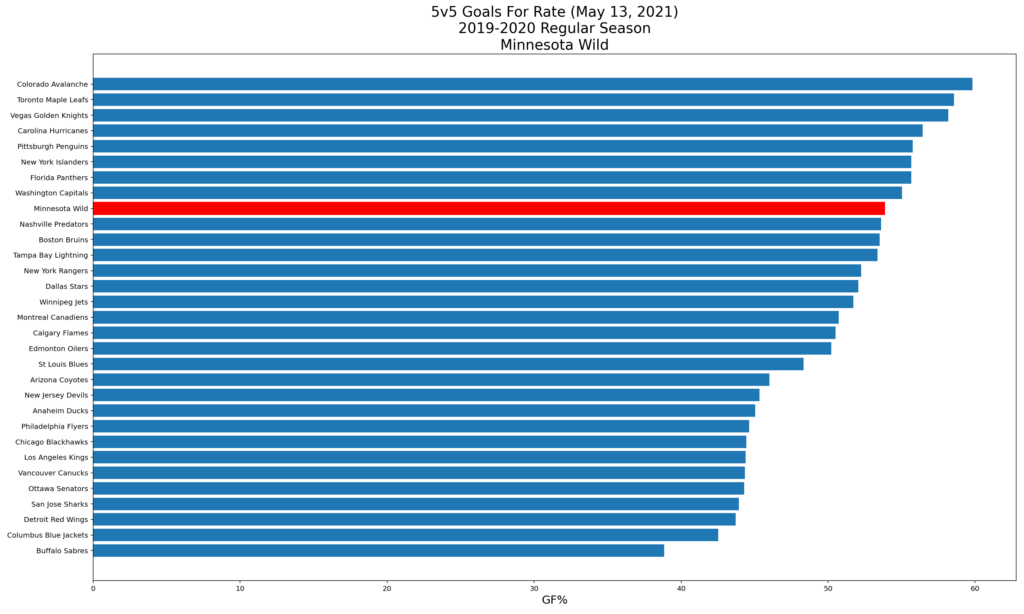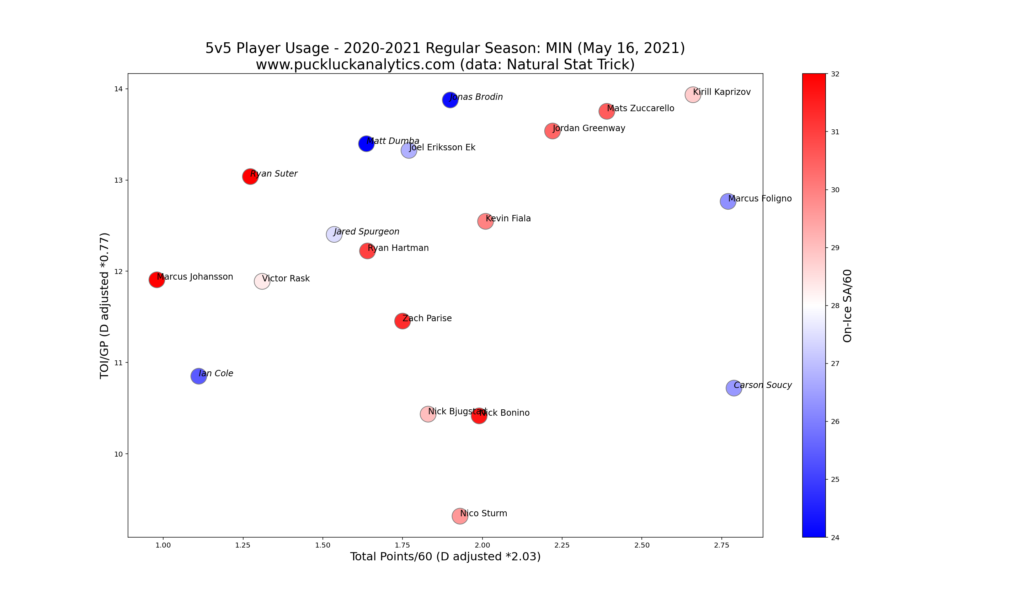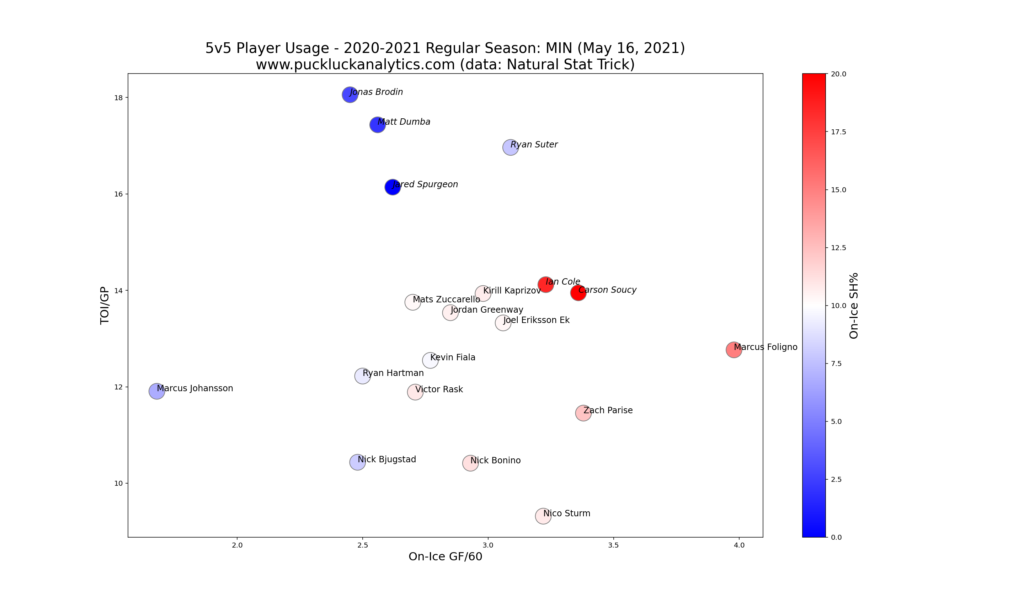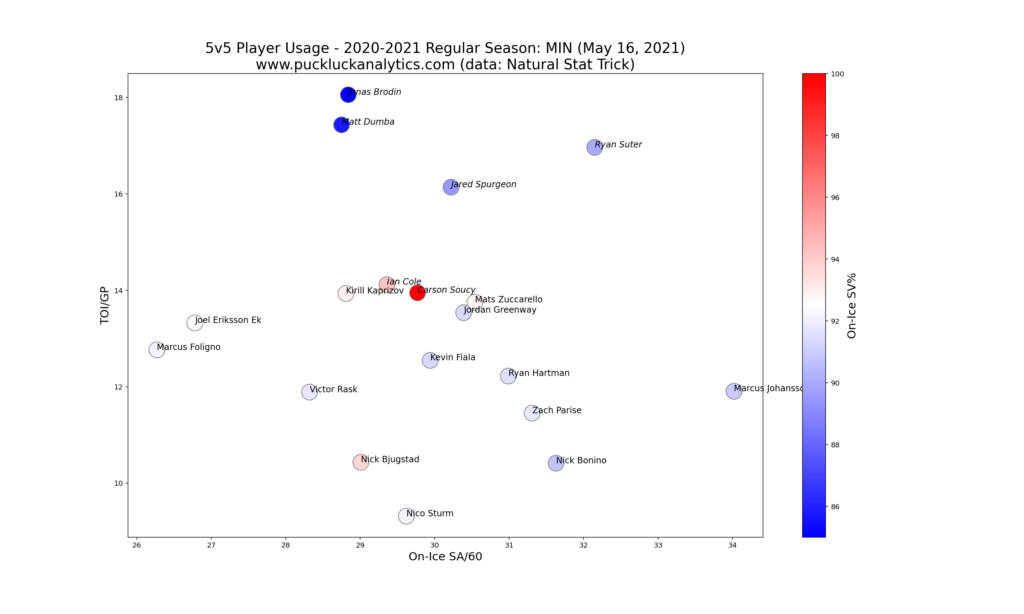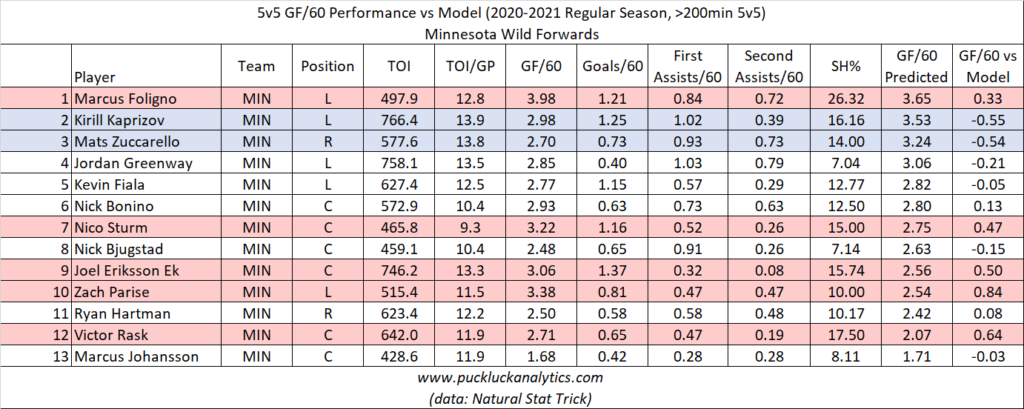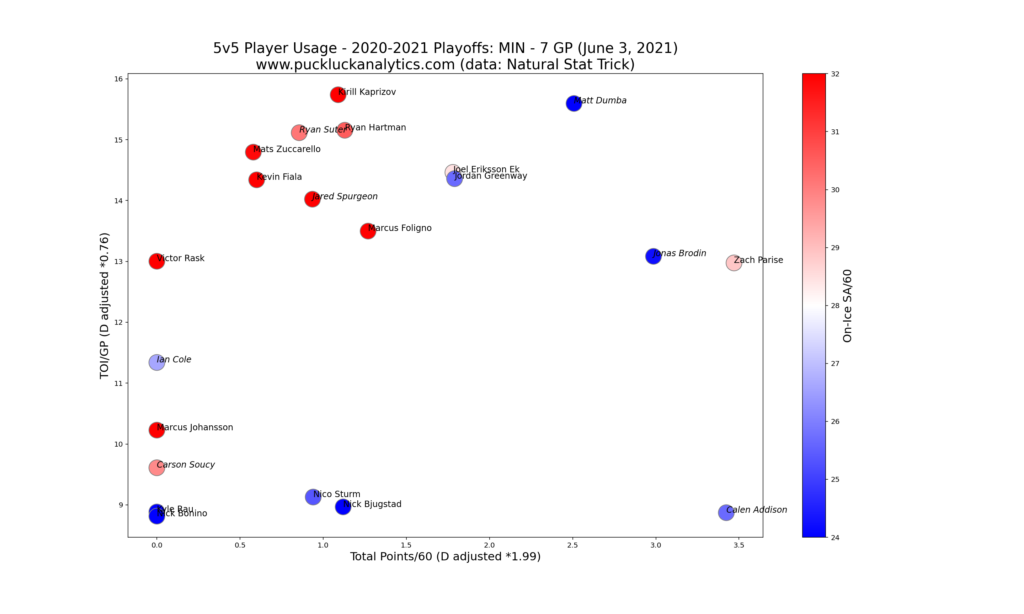The Minnesota Wild took a big step forward this year as rookie Kirill Kaprisov took the West Division by storm. Let’s take a look at the Wild’s season. For more detail on some of the plots we’ll look at, I encourage you to check out this post.
Overall Performance (Regular Season)
The Wild cemented themselves into a playoff position early in the season and never looked back. Chasing the powerhouse Avalanche and Golden Knights, they finished as the third seed in the West Division and earned a date with the Golden Knights in the first round. Let’s take a look at our points predictor model, which uses 5v5 goal rates, to see how the Wild stacked up at even strength.
We see the Wild outperformed our model somewhat, indicating that their final points percentage was better than their underlying 5v5 play would suggest. However, the model still puts them solidly in 3rd place in the division. While factors that typically vary more from season to season (such as OT results and special teams) may have inflated their point total a bit this season, the Wild still appear to have a relatively strong 5v5 base to build on.
Let’s take a look at the 5v5 goal rates feeding into the model.
We see that Minnesota’s offense was very strong this season, while their defensive numbers were in the middle of the pack. This is a significant change from the defensive Wild teams of seasons past and the Wild look like they should focus on improving their defense over the offseason.
Player Performance (Regular Season)
We’ll start delving into individual player performance by looking at 5v5 usage chart. By factoring stats for defensemen, we get a visual depth chart with players distributed along the diagonal from top right to bottom left.
We see most players along the diagonal line that we expected, with rookie sensation Kaprisov at the top. A handful of players show up well below the diagonal line, suggesting that they were under-utilized this season. Marcus Foligno and Carson Soucy are the most notable and we’ll keep an eye out for them as we continue through our review.
By plotting on-ice GF/60 vs TOI/GP we get a visual depiction of the relative offensive contributions of each player. Players who appear further to the top right had larger contributions to team GF/60 via higher offensive impact and ice time.
Foligno stands out again on this plot. With the highest 5v5 on-ice GF/60 by a significant margin, it looks like the Wild could have leveraged his impact more. Zach Parise also seems to have a very strong offensive impact with limited ice time.
Plotting on-ice SA/60 vs TOI/GP gives us a similar depiction for skater impacts on team GA/60. This time, players further left and down had better impacts on team defense.
Foligno stands out once again, along with Joel Eriksson Ek as the forwards with the best defensive impact. With most skaters clustered near the league average of 30 SA/60, the Wild may be able to improve their defensive game by focusing on reducing shot quantity.
Next, we’ll use our on-ice GF/60 models to look for signs of players’ impact on their line mates. We are most interested in the variance between the model and actual, with variances greater than about 0.3 worth noting. Negative variances suggest a player carried their line mates offensively.
Starting with forwards, two players stand out as potentially having carried their line mates. Kaprisov and Mats Zuccarello both have significant variances. While they both have strong shooting percentages that may have inflated the model predictions slightly, it’s not enough to explain the full variance. There are also a handful of forwards that appear to have been carried offensively by their line mates, including Marcus Foligno. Foligno benefitted from an astronomical shooting percentage this season and the model result is most definitely inflated as a result meaning the variance should be even larger. Some strong shooting percentages for Eriksson Ek, Nico Sturm and Victor Rask may have had similar effects here. All things considered, there is reason to suspect some offensive regression at the team level next season due to the generally high shooting percentages among the Wild forwards.
We see only large positive variances from the model among the Wild defensemen, which suggests that the team’s offense was generally carried by the forwards. Carson Soucy has the highest predicted GF/60, which supports our previous theory that he was under-utilized.
The Wild received strong goaltending from the tandem of Cam Talbot and Kaapo Kahkonen this season. Talbot had a great season as the starter and Kahkonen’s numbers were decent for a backup role.
Playoff Performance
Up against one of the two juggernauts in the West Division in the first round, the Wild took the Golden Knights all the way to game 7. While it’s too small of a sample to make long term predictions from, we can get some insight into what happened in the series looking at a 5v5 usage chart.
While all of the Wild’s top players got on the board at 5v5 in the series, their production was generally down substantially from the regular season. Running into a hot Marc-Andre Fleury in the opposing crease was a large factor. While Cam Talbot was equally impressive in the Wild net, Minnesota couldn’t quite match Vegas in the end.
Looking Ahead
With under $64M committed to next season’s cap as they head into the offseason, the Wild have some flexibility to make roster improvements before the next campaign gets underway.
Key RFAs:
The Wild have only a few RFAs that finished the season on the NHL roster, all forwards. 24 year old Joel Eriksson Ek is the most notable as we saw he was an impact player during our review and he is just entering his prime.
Key UFAs:
The Wild have a number of UFAs, however none that stood out as key players in our review. Marcus Johansson, Nick Bonino and Ian Cole all have expiring deals that will free up some cap space. These players were all depth pieces this season and none stood out in our review as key players. The Wild are probably better off to look for other options where they can use the cap space to make some roster improvements.
Key Players Under Contract:
Kirill Kaprisov stormed onto the NHL scene this season and helped revitalize the Wild’s offense. The Wild will need him to avoid the sophomore slump. Cam Talbot’s stellar performance in net was also a difference maker for the Wild and they’ll need him to carry his strong play into next season.
Tough Questions:
Was the Wild’s offensive outburst this season sustainable? We saw some signs in our review that there could be regression due to generally high shooting percentages. With over $27M in cap space tied up for their top 4 defensemen (3 with NMC), can the Wild add the right pieces to keep their offense firing next season?
Offseason Priorities:
With a few holes in the forward ranks due to expiring contracts for UFAs, the Wild have an opportunity to upgrade their forward depth. Targeting middle six forwards would be a good plan to maximize offensive impact throughout their lineup.
Check out my other season reviews that are already up, such as the Nashville Predators and the Edmonton Oilers, and subscribe to catch the rest of my reviews as they come out.
data: Natural Stat Trick
cap data: CapFriendly
